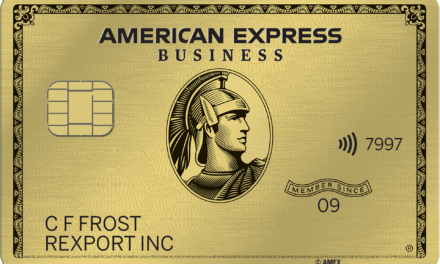My first ever credit card was a Chase Slate that I opened in 2014. I was still building my credit at the time so I started where I was familiar with – my bank, Chase. One year after opening the Slate, I decided to upgrade to the Chase Freedom because I was interested in earning Chase Ultimate Rewards (UR) points.
Chase initially gave me a paltry $500 credit limit and a very high APR because I was building my credit. Plus, they would not give me a credit limit increase for over two years, so I foolishly closed my Freedom. I regretted closing that card because of how valuable UR points are. But the closure gave me the opportunity to later open a new Freedom card and earn another sign-up bonus.
First introduced in 2006, the Chase Freedom was a stalwart in Chase’s credit card lineup for 14 years. Its success even inspired a “sibling” in the Chase Freedom Unlimited in 2016 and a successor in the Chase Freedom Flex in 2020. The Chase Freedom is no longer available to new applicants as of September 15, 2020. But it could be obtained via product change.
Earning
The Chase Freedom last had a sign-up bonus worth 20,000 Ultimate Rewards (UR) points (or $200 in cash back). It could be earned after spending just $500 within the first three months.
Plus, the Freedom earned 5x UR points per dollar spent on rotating quarterly categories. The bonus category spending limit per quarter is $1,500, which means you can earn up to 7,500 UR points per quarter. The only other cards that have a similar earning structure are the Discover It and the US Bank Cash +.
Last Four Quarterly Categories
Chase normally releases their quarterly categories two weeks before the start of a new quarter. The categories were as follows for the last four quarters before the Freedom Card was discontinued:
- 3rd Quarter 2020: Amazon.com and Whole Foods purchases
- 2nd Quarter 2020: Grocery Stores, Gym Memberships, and Health Clubs
- 1st Quarter 2020: Gas Stations; Streaming Services; and Phone, Cable TV, & Internet Services
- 4th Quarter 2019: Department Stores, Pay Pal, and Chase Pay
One risk with rotating category cards is their usefulness. Your mileage may vary, but the Freedom might be used heavily during one quarter and not used at all during another. Fortunately, the Chase Freedom had no annual fee. That means you could have left it in your sock drawer for one quarter and pulled it out later.
Burning
Earning points is fantastic, but points earned are useless if you cannot redeem them for anything of value. Chase has multiple options for points redemption:
Cash Back, Travel, & Gift Cards
Cash back is one of just three redemption options if you do not have a premium Chase card. If you redeem for cash back, each UR point is worth 1 cent. By comparison, American Express Membership Rewards (MR) points are worth between 0.5 and 0.8 cents per point (CPP) if you redeem for cash back or a statement credit.
Furthermore, you can also redeem UR points for travel via Chase’s travel portal. As with cash back, points are worth 1 CPP if you redeem them this way.
The final option is to redeem points for gift cards. With this option, UR points are worth 1 CPP. Sometimes, Chase discounts some of their gift card options, enabling cardholders to redeem for more than 1 CPP.
Redeeming points for any of these options is not optimal, but not terrible either. Any credit card that gives you 5% cash back in rotating categories is a winner. But moving points to Chase’s transfer partners is the most valuable redemption option if you can do it.
Transfer Partners
Transfer partners are by far Chase’s most valuable option, but they are only available if you also have a Chase Sapphire Preferred, Chase Sapphire Reserve, or Chase Ink Business Preferred. Chase had the following transfer partners as of its discontinuation:
Hotels
- IHG
- Marriott
- World of Hyatt
Airlines
- Aer Lingus
- British Airways
- Emirates
- Iberia
- JetBlue
- KLM Flying Blue / Air France
- Singapore Airlines
- Southwest Airlines
- United Airlines
- Virgin Atlantic
Rules & Regulations
The Chase Freedom was subject to the 5/24 Rule. This rule was enacted by Chase to prevent “churners” from scoring their sign-up bonuses too many times. The 5/24 rule states that you will not be approved for any UR-earning card if you were approved for five or more new accounts in the last 24-months. Some Chase co-branded cards also fall under this rule as well.
Similar Cards
Chase Freedom Flex
The Chase Freedom Flex is the successor to the Chase Freedom. This is the perfect card for you if you want to get a 5x rotating category card from Chase after September 15, 2020.
The Freedom Flex comes earns 5x UR points within rotating quarterly categories and travel from the Chase Travel Portal. Plus, it earns 3x points per dollar on Dining and Pharmacy purchases, as well as one point per dollar on non-bonus spend.
Furthermore, the Freedom Flex comes with a sign-up bonus worth 20,000 UR points (or $200). You can earn this bonus by spending just $500 within the first three months. Like the Freedom, the Freedom Flex has no annual fee.
Chase Freedom Unlimited
Despite the similar name, this card is much simpler than its 5x rotating “sibling”. The Freedom Unlimited earns 1.5x UR points on all purchases. It also comes with the same sign-up bonus as the Chase Freedom.
For some people, the Freedom Unlimited can be a complement to the Freedom Flex Card. Both earn UR points and they be pooled into the same Sapphire or Ink Preferred card account. I use both cards in this way to help maximize the amount of UR points I earn each month.
Furthermore, the Freedom Unlimited comes with a sign-up bonus worth 20,000 UR points (or $200). You can earn this bonus by spending just $500 within the first three months. Like the Freedom, the Freedom Unlimited has no annual fee.
American Express Everyday Card
The American Express Everyday Card has a different earning structure than most points and miles cards. It earns 2x Membership Rewards (MR) points per dollar at grocery stores and only one on everything else. You will also receive a 20% points bonus if you use your card at least 20 times per month. This means you can potentially earn 2.4x points at grocery stores and 1.2x points on non-bonus spend.
This card has no-annual fee and a public sign-up bonus worth 10,000 MR points. It can be earned after spending just $1,000 in the first 3 months.
The advantage of the Everyday Card is that it does not require a premium Amex card to transfer points to transfer partners. In fact, its the only personal credit card in the industry that can transfer points to partners. The Freedom does not have this special advantage.
Discover It
Cash back lovers rejoice! The Discover It is one of my favorite cash back cards and a great alternative (or complement) to the Chase Freedom. Unlike the Chase Freedom, the Discover It earns 5% cash back for purchases within a set of rotating categories. However, the Freedom is better for travelers who want to earn Chase UR points, regardless of the categories.
Some people have both cards to maximize the 5x rewards. Both cards have different sets of rotating categories each year. Therefore, using both cards for different purchases can be easy. I have both cards for this reason and because my Discover It is my oldest active card.
This card has no annual fee (and not many other fees to boot). After all, Discover is the pioneer of having as few fees as possible.
Final Draw
The Chase Freedom was on the market from 2006 to 2020. Both cash back lovers and travelers have benefited from this card and all that it had to offer for 14 years! It was a nice alternative to the Chase Freedom Unlimited and was a great complement to the Chase Sapphire cards and Chase Ink Business Preferred card.
The Freedom holds a special place in my heart as it was my first credit card. It let me start my credit history when I was still in college and it introduced me to points and miles. Even though I foolishly closed this card in 2017, I was fortunate enough to apply for it again later on and earn another sign-up bonus.
This post is for historical purposes as the Chase Freedom Card was discontinued on September 15, 2020.





[…] is the last day of March and the first quarter. Just a quick reminder that Chase Freedom, Discover It, and the other quarterly rotating cards are switching categories tomorrow. The […]